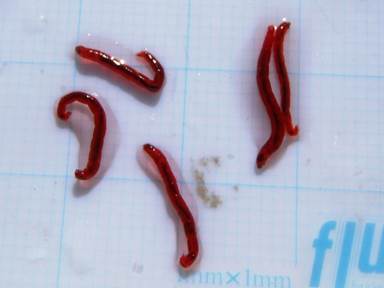FOOD SOURCES AT SPRING CREEKS – FROM MINOR TO MAJOR FORMS INCLUDING FLY PATTERNS
Introduction:
Here in southwest Montana, fly anglers are blessed with spring creeks (both private and public) and streams that have the same quality of spring creeks. I don't believe it's an overstatement to say that my area – Livingston and surrounding areas, through Paradise Valley, to Yellowstone National Park – is definitely at the center. All the fishing activities and guide businesses asides, the biggest reason I live and fish in this area is that these streams will teach us the essence of fly-fishing. It will never be redundant to repeat "Spring Creeks are the classroom of fly-fishing". So far I have written several how-to and technical articles about Livingston's spring creeks for Fly Anglers OnLine. For this series, my focus is on food sources that I have observed and corresponding flies that I have developed over the seasons. Flies for spring creeks are always developing and progressing as there are abundant food sources and trout can change their moods and menus any moment.
Major well-known hatches and patterns are in my list, as well as in trout's menu, such as PMD Dun and BWO Emerger. But also I'd like to focus on many other lesser-known food sources that may look and sound interesting to both experts and curious readers. Those are lesser-known by anglers but not by/among trout according to my food sampling, stomach pumping, and fly experimentations. Besides that fact, "from minors to majors" implies 1. Tiny creatures to bulky ones; 2. Degree of abundance; and 3. Seasonal importance. Then last but the not the least, this is merely a list just for now. As stated above, flies for spring creeks are always developing and progressing. There are food sources that I collect constantly but I always try to think of new patterns out of them, something new for both anglers and trout. I'm always learning and experimenting = the never ending process that I'd love to devote myself too.
Sources & References:
From a few decades ago until the current digital era, many great books have been published to cover this subject. Those books have superb illustrations and pictures. There are very in-depth entomology articles in magazines, however, one problem of these paper media: scientific names (Latin names) have been changed over the course of time and will continue to do so without notice. Most magazines are reasonable priced, but for "Average-Joe" anglers, including myself, it can be hard to own all of them. Are we supposed to get the newer edition every time? There must be aquatic entomologists in nearby colleges, scientific laboratories, and agencies. However, they can be hard to reach every now. Then not every angler is capable of keeping samples (stomach pump or live seining) in the vial to show them. So what's the easiest and most practical tool for every fly angler? It's the online source. Just typing some Latin names on an online search engine, and you will be surprised by the number of answers and their precision. Oftentimes you may even come across corresponding fly patterns! These two sites listed here are two of the best ones that I have known for a while and that I heavily rely on. They catch up with recent updates (changes) of Latin names very well. Most importantly these sites are maintained by "trout anglers" and in "anglers' viewpoints". From experts to novices, these two sites are worth bookmarked on your internet browsers.
TroutNut.com https://www.troutnut.com (if it's hard to find insects you are looking for, type in "search" and it will show you pages both inside and outside of the site.)
West-Fly https://www.west-fly-fishing.com (click "Entomology" among other useful information.)
Chapter 1: Midge Larva
Midges (Diptera) are one of constant year-long food sources at spring creeks. There's nothing new or surprising about that to most anglers. It's such a simple looking creature to imitate. However, since it's simple, there are countless ways to imitate. I have experienced one pattern can be more effective than the others among simple ties. The golden rule of fly tying "size, shape, color" still applies to midge larvae as well.
|
Vivid red live larvae, collected from Armstrong's Spring Creek. |
L.L. Beads (mini & red)
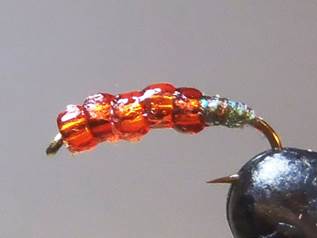 |
|
Chewy Midge Larva
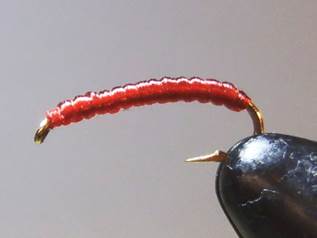 |
|
Flexi Midge Larva
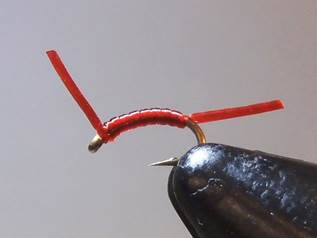 |
|
Flexi Zebra Midge
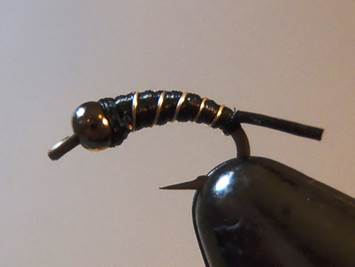 |
|
How to Fish:
Use under an indicator or trail under dry-flies. Midge larvae can be present both in moving and flat waters. On spring creeks, when you spot a trout holding near the bottom with its mouth constantly working on something, it's most likely feeding on midge larvae as they are washed away. Try sight-fishing for the ultimate challenge and reward!!
Satoshi Yamamoto, https://leftyangler.blogspot.com, is a guide and a professional fly-tyer in Livingston, MT.
| Sysadmin Note |
|---|
| Part 2 can be found here |

